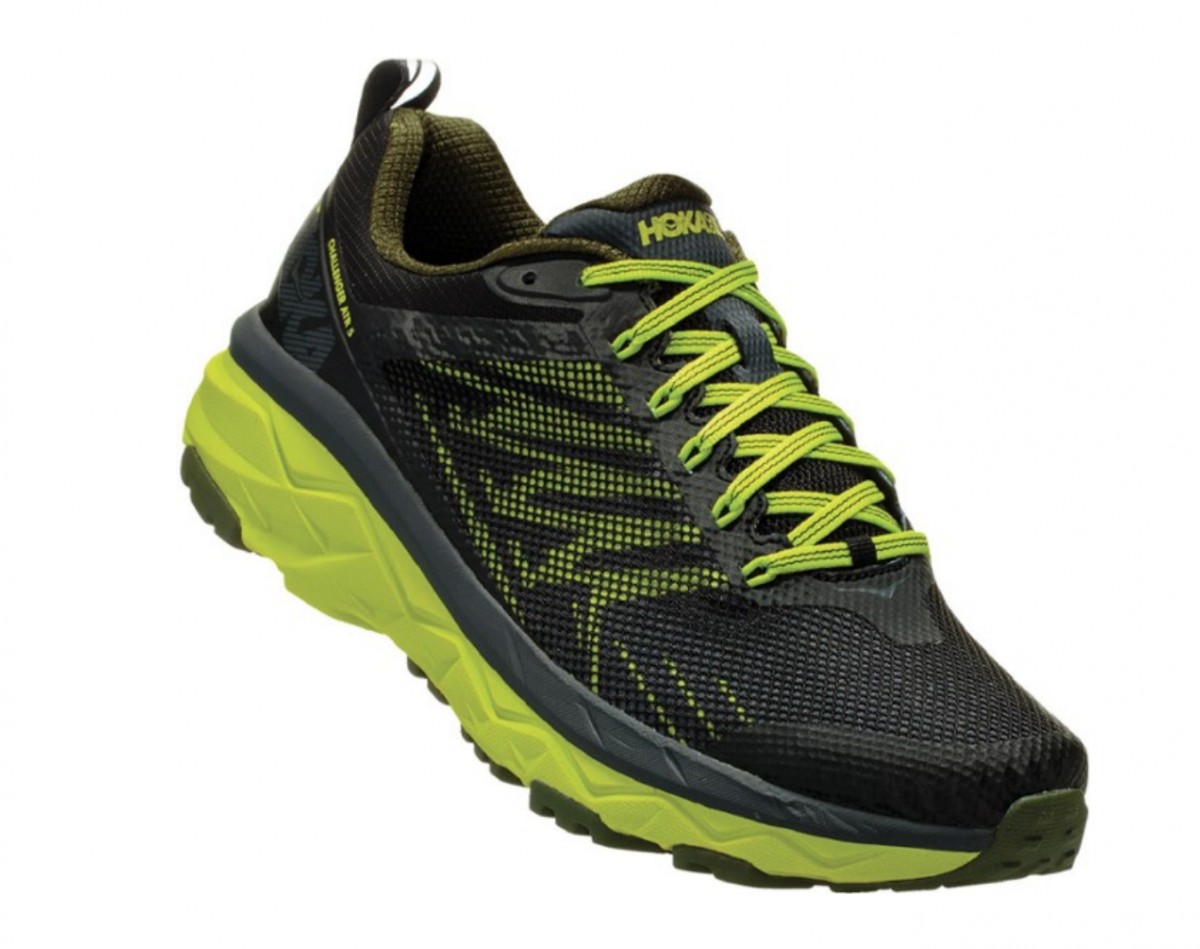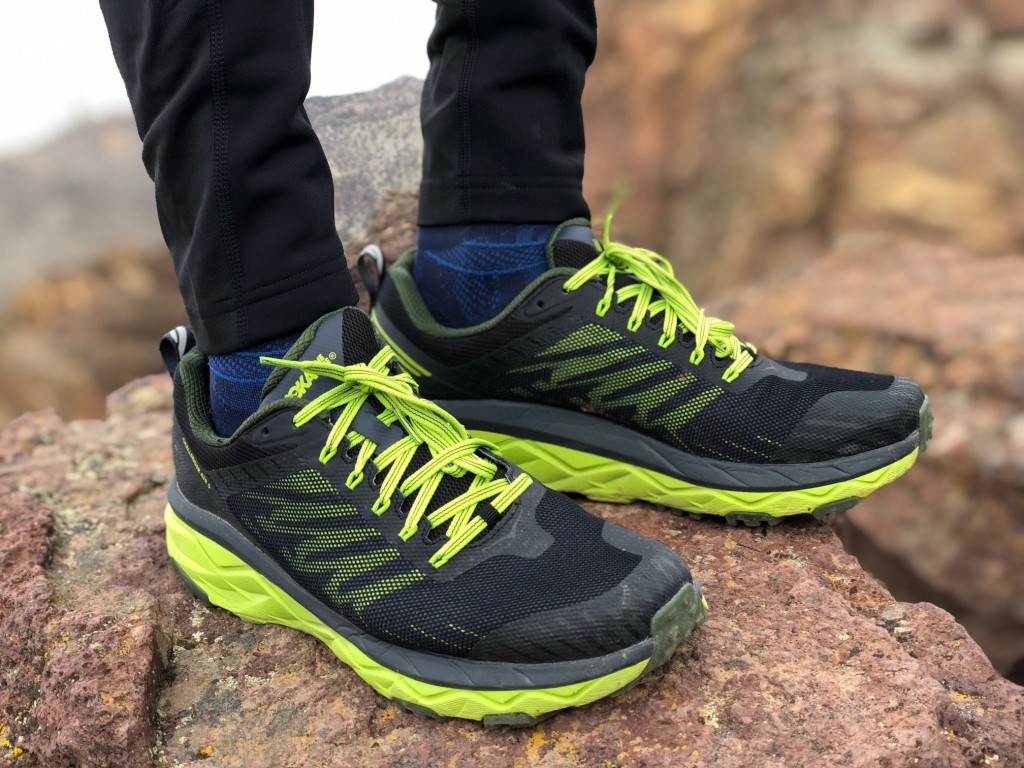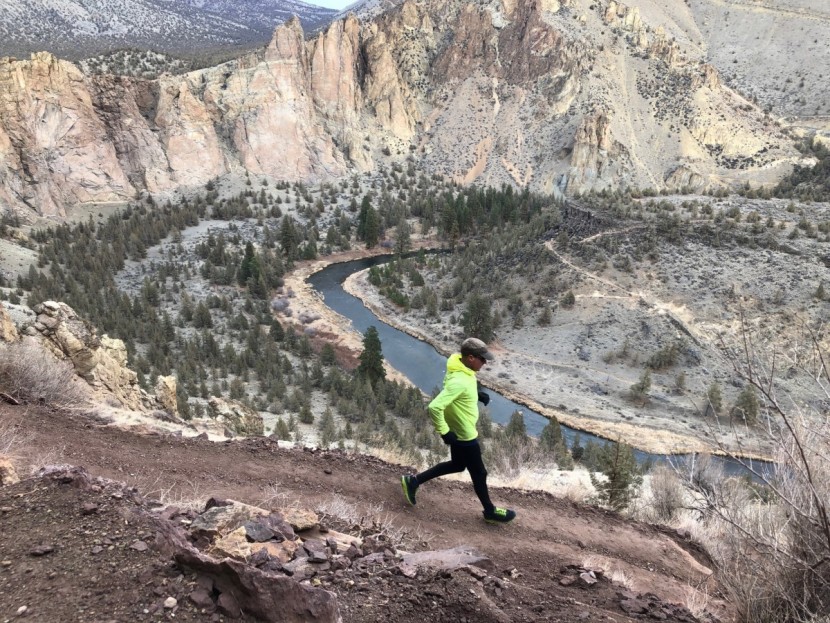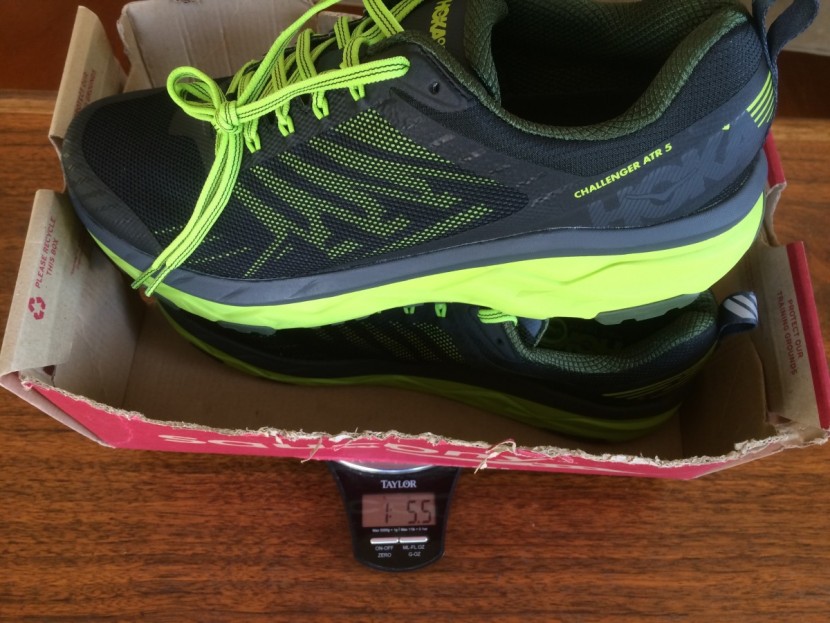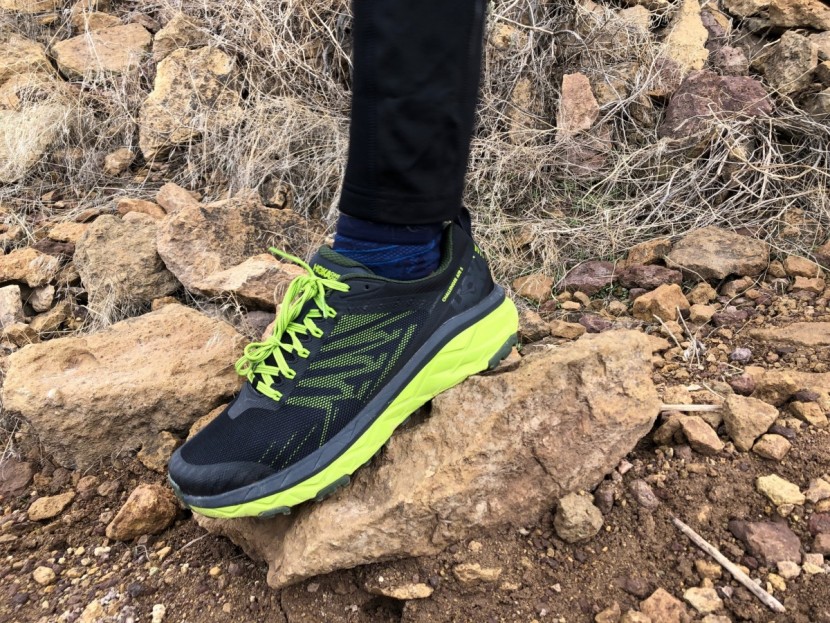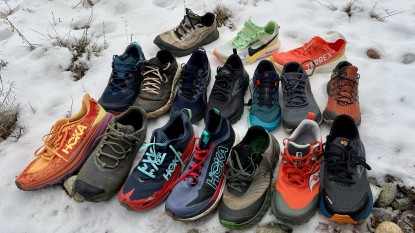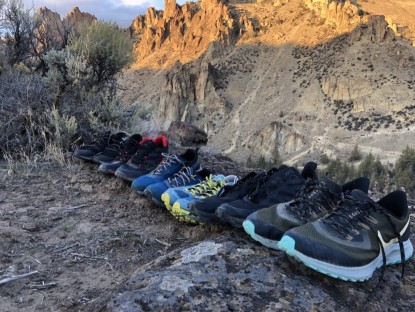Hoka Challenger ATR 5 Review
Our Verdict
Our Analysis and Test Results
The newest update to this immensely popular shoe is due out in early winter, with pre-sales available in October. We are on the list to pick up our pair ASAP, and will update this review as soon as we have finished testing. If you love the 5, pick up your last pair(s) on closeout now. The review below is for the 5.
The Hoka Challenger ATR 5 retains all that was great about the ATR 4, while finally adding a sticky rubber outsole that is comparable in performance to its competitors. For years this shoe has featured a sparsely lugged outsole with underperforming grip on rocky or loose terrain, but has now finally seen that problem addressed. We found the large, square-shaped lugs to be far stickier on rocky terrain than we have come to expect, while their square shape ensures they don't rip off or wear down too quickly.
Beyond that, this shoe retains most of the great features of the previous ATR. In particular, we love how little water the dual-layered upper absorbs, and how quickly and efficiently it sheds what water is does take on while crossing a stream or splashing through puddles. We are very happy that the shoe now comes in a choice of widths — either the standard D or EE wide. We are also large fans of the firmer foam midsole now common in Hokas that still effectively minimizes the impact to the foot from underfoot obstacles, but provides a stability and responsiveness that is more akin to a normal running shoe, and eliminates the “running on trampolines” feeling we experienced in many older pairs of Hokas.
Foot Protection
With 31mm of underfoot protection in the heel, this is far and away one of the most cushioned shoes you will ever run in. EVA foam is the principal method this shoe uses to protect your foot from impacts with sharp rocks and roots found along the trail and also does a great job of lessening the forces on your body that are inherent in running and compound when very long distances are commonly run. There is no rockplate in the midsole, but there doesn't need to be, as virtually no sensation of what you are stepping on will be able to penetrate the thick, firm foam layer. For this reason, they are among the very best when it comes to underfoot protection.
The Challenger ATR 5 has a firm protective cushion that is not very bouncy, but remains stable and supportive. The upper of this shoe has a TPU covered toe bumper that stretches around the front of all the toes but remains somewhat soft. The dual-layered mesh material that constitutes the upper is strong by itself but is not reinforced in the critical blowout areas.
Traction
The traction on this shoe is much improved from previous versions. It now features a sticky rubber outsole with 4mm deep rectangular lugs that present a large amount of surface area to land upon. This pattern is more durable than smaller and deeper lugs, while the cutout, exposed EVA midsole foam actually works to accent the lugs and make them functionally deeper than they may appear. The rubber itself is sticky and grippy on dry, loose trail, mud, and on dry rock, as we were able to verify while testing.
This shoe does not present the same amount of insane grippiness as other competitors that feature deep cleated lugs, nor will it provide the same durability found in the new graphene infused rubber compound on the bottom of Inov-8 shoes, but it does provide more than adequate grip for the vast majority of trail running situations, while doing so in a pattern that will not be a liability if you choose to get some of your training done on asphalt.
Stability
We have noticed the thick midsoles of Hokas changing over the years to be firmer, with less give and squishiness than earlier versions of these shoes had. For us, this is a great development because it presents a much more solid landing platform that eliminates a large percentage of the lateral, side-to-side rocking that has caused these shoes to be such a liability when it comes to stability. In that regard, there is no doubt the Challenger ATR 5 presents and improved option when it comes to stability.
However, worth pointing out is that another key element of stability is how well the upper of the shoe grips your foot, holding it in place so it lands centered on the footbed exactly as it should, regardless of the camber of terrain you are running over. This shoe, for our testers' feet anyway, still misses the mark a bit. We found the forefoot to be a bit narrow and tight, while the heel and midfoot were quite wide, allowing for a bit of foot shifting, or slop as we like to call it, as we ran on uneven terrain. All feet are shaped differently of course, so this may not be a problem for you. But the gold standards still do a much better job of holding the foot firmly and comfortably in place.
Comfort
If you were to try this shoe on in isolation, by itself, we believe that most people would describe is as very comfortable. However, we assess shoes for comfort compared to all of the other shoes that we also assess, and by that standard the Challenger ATR 5 is middle of the road. It fits very similarly to the previous version. It is reasonably narrow in the forefoot, while it widens in the arch and heel. For our head tester, this meant that there was a bit of movement of his heel within the shoe. It wasn't much of a problem running on flat ground but was noticeable when running up hills. Worth pointing out is the fact that this shoe now comes in two different width options, size D or EE wide. We only tested the normal D size, but those with wide feet should certainly consider the EE wide, an option rarely found in trail running shoes.
We found the upper of this shoe to be very comfortable and well made. The tongue is held in place by a thin mesh internal sleeve, and the seams throughout the interior are low profile and don't rub. Comfortable padding surrounds the ankle opening and the top of the tongue. It is also among the top performers in our water bucket test, absorbing far less than the average amount of water when dunked, and then also doing an effective job of shedding what remains in five minutes on the trail.
Weight
Our pair of men's size 11 shoes weighed 21.5 ounces on our independent scale, fresh out of the box. This is about .5 oz. per shoe heavier than the ATR 4 weighed.
Despite this addition in weight, the shoe remains quite light, especially when you consider the bulk of the shoe compared to others that weigh less.
Sensitivity
Since this shoe is so incredibly protective underfoot, it is probably no surprise that it is one of the least sensitive. After going out of our way to repeatedly stomp on the pointiest ends of rocks we encountered on the trail, we can say that we virtually never felt anything in the sole of our feet.
A prospective buyer should be well aware of this fact and desire maximum protection over any sort of “trail feel,” or they may end up disappointed with the dissociative effect that running in such a maximally cushioned shoe can have.
Value
These shoes can be had for a roughly average price if paying retail, which is still no small chunk of change. While we didn't test them to failure, we see no reason why they shouldn't be expected to last through a full season of running. They are among the least expensive Hokas you can buy. We think they offer great performance and so present a good value purchase.
Conclusion
The Hoka Challenger ATR 5 is one of our favorite maximally cushioned shoes, and comport themselves well compared to the other maximally cushioned shoes that we have tested. We love the fact that they have a newly designed outsole that offers drastically improved traction, and are impressed with how well they drain water, making them a great choice for wet climates and dreamy trail running adventures.


